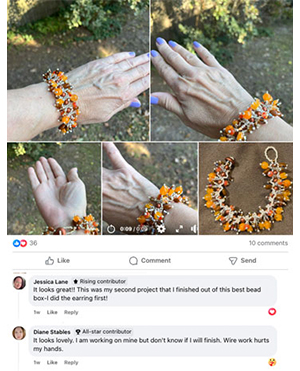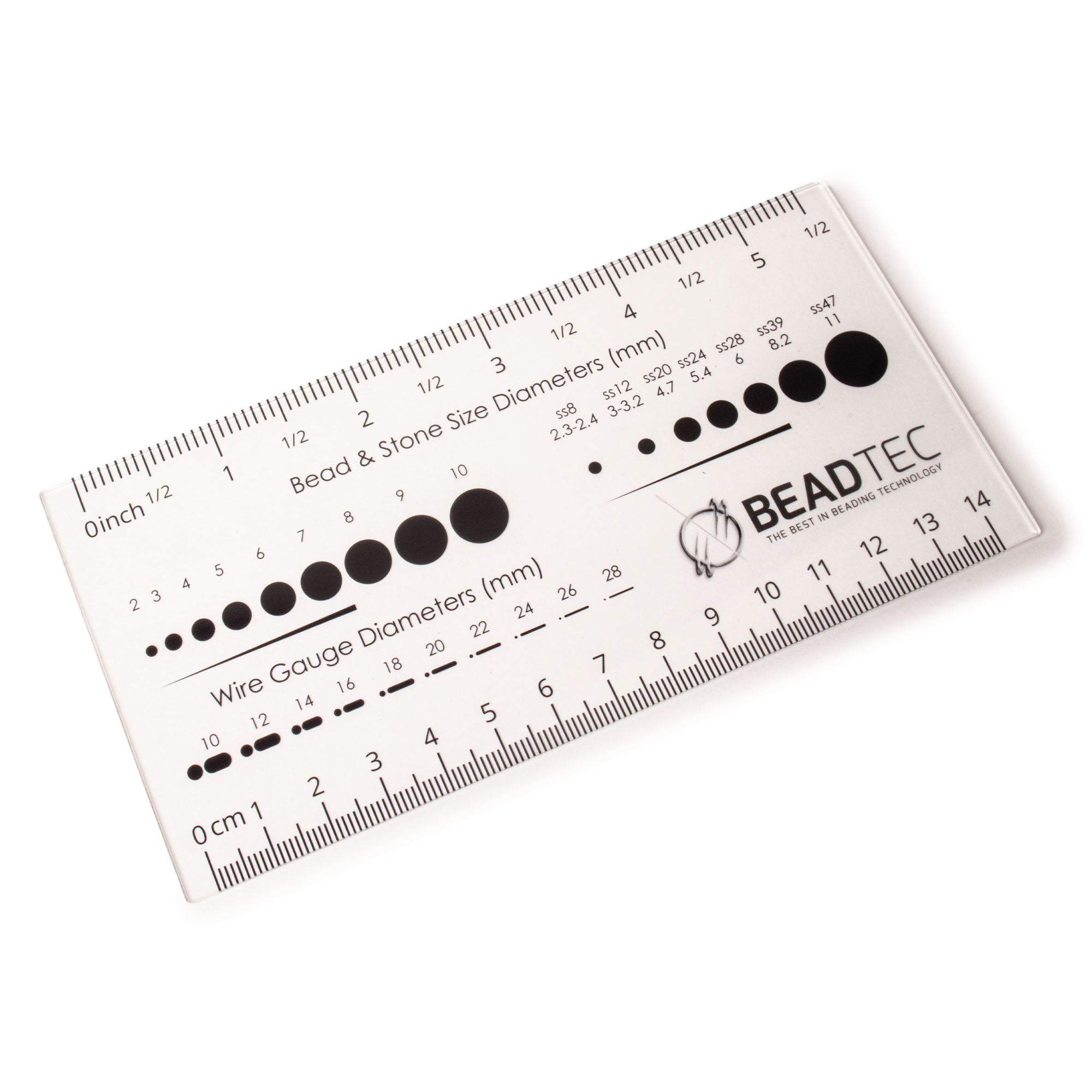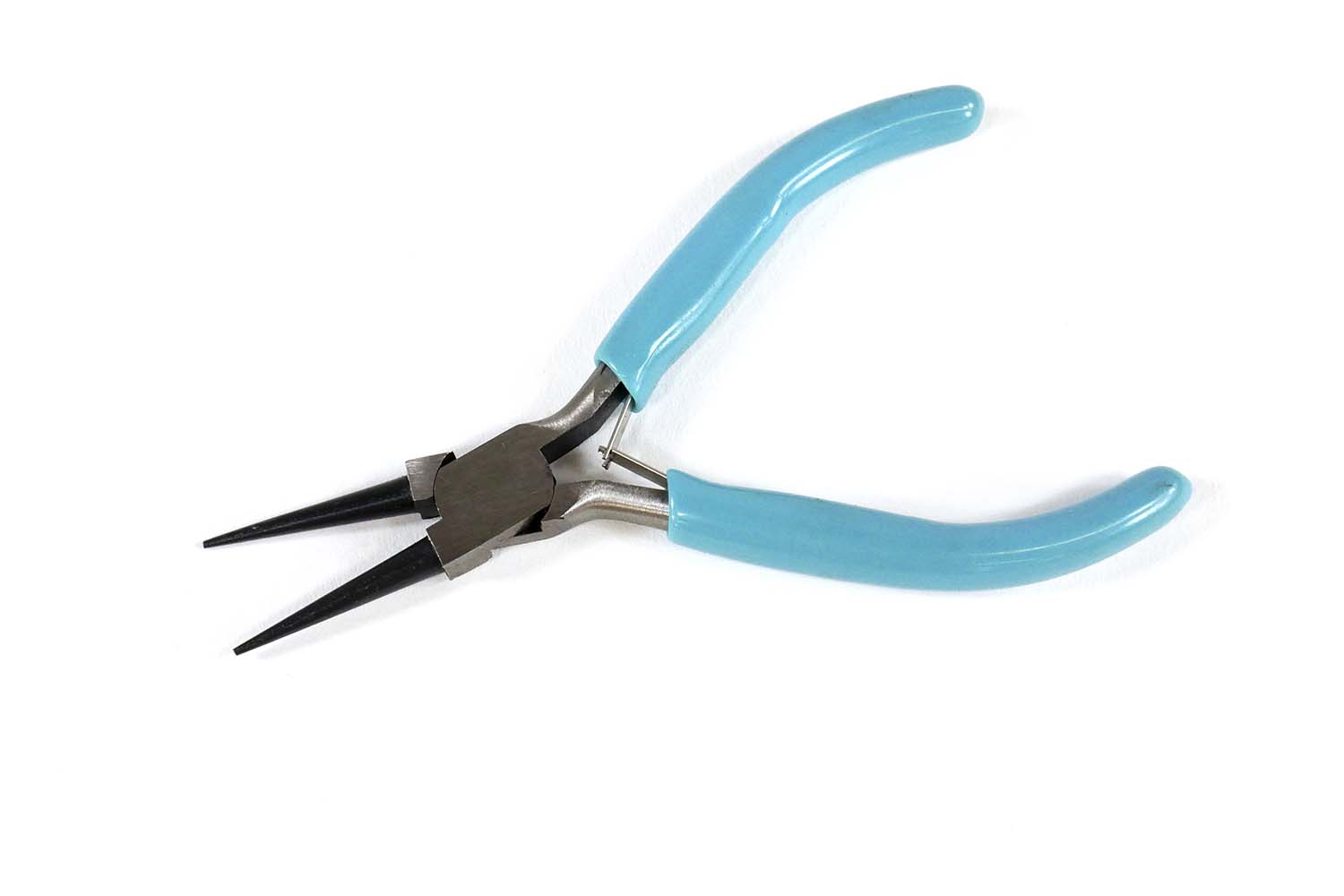- Jewelry-Making Supplies ▾
Design Jewelry with Confidence!
Seed Beads
Thread, Wire, & Stringing Materials
Athenacast Findings & Components
Everything Else
- Kits & Collections ▾
Assemble Your World
Kits & Collections
- Subscriptions ▾
Want monthly Beading Happiness?
Subscriptions
- Learn to Make ▾
Want to learn more?
- Discounts & Deals ▾
Explore Today's Promotions!
- Jewelry-Making Supplies
- Kits & Collections
- Subscriptions
- Learn to Make
- Discounts & Deals
-
Seed Beads
Thread, Wire, & Stringing Materials
Findings & Components
Everything Else
-
Kits & Collections
-
Subscriptions
- Home
- How to Make Jewelry
- Better Beader Episodes
- Spotting the Difference: Brick …
Spotting the Difference: Brick Stitch vs Peyote Stitch

Watch the Video Tutorial
Watch the Video Tutorial
Need Any Extra Materials?
Need Any Extra Materials?
Need Any Extra Materials?
Need Any Extra Materials?
Episode Transcript
Episode Transcript
Introduction
Brick stitch and peyote stitch are two popular beading techniques that create stunning, textured designs. While they may look similar at first glance, each stitch has its own unique characteristics and creates a distinct pattern. In this article, we'll explore the differences between brick stitch and peyote stitch, based on insights from the Better Beader episode "Spotting the Difference: Brick Stitch vs Peyote Stitch" by Potomac Beads.
Understanding the Basics
Before diving into the differences, let's briefly review the fundamentals of each stitch:
- Brick Stitch: Brick stitch creates a woven, textured pattern that resembles bricks stacked in a wall. Beads are added one at a time, with each bead connecting to two beads in the previous row.
- Peyote Stitch: Peyote stitch, also known as gourd stitch, creates a similar textured effect but with a slightly different pattern. Beads are worked in a circular or back-and-forth manner, with each bead connecting to one bead in the previous row and one bead in the same row.
Key Differences
Now, let's explore the main differences between brick stitch and peyote stitch:
- Bead Placement: In brick stitch, beads are offset, creating a staggered, brick-like pattern. In peyote stitch, beads are stacked directly on top of each other, forming a more uniform pattern.
- Thread Path: Brick stitch follows a horizontal thread path, with the thread moving back and forth through the beads. Peyote stitch, on the other hand, follows a vertical thread path, with the thread moving up and down through the beads.
- Edges: Brick stitch creates a saw-tooth edge on one side and a straight edge on the other. Peyote stitch produces straight edges on both sides, making it ideal for creating even-count flat panels or tubular designs.
- Shaping: Due to its offset nature, brick stitch offers more flexibility in shaping and creating curved or angled designs. Peyote stitch is better suited for creating straight, even-count designs or tubular shapes.
When to Use Each Stitch
Both brick stitch and peyote stitch have their strengths and are suited for different types of projects:
- Brick Stitch: Brick stitch is excellent for creating angled or curved designs, such as leaf shapes, triangles, or diamond patterns. It's also a great choice for projects that require a more organic, textured look.
- Peyote Stitch: Peyote stitch is ideal for creating even-count flat panels, such as bracelets or bookmarks, or tubular designs like beaded ropes or bezels for stones. Its uniform structure makes it perfect for projects that require a consistent, grid-like pattern.
Combining Stitches
While brick stitch and peyote stitch have distinct characteristics, they can also be combined to create unique designs. For example, you can use peyote stitch to create a straight edge on a brick stitch project or incorporate brick stitch accents into a peyote stitch pattern. Experimenting with both stitches and combining them in creative ways can lead to stunning, one-of-a-kind pieces.
Conclusion
Understanding the differences between brick stitch and peyote stitch empowers you to choose the best technique for your beading projects. Whether you prefer the organic, textured look of brick stitch or the uniform, grid-like structure of peyote stitch, both techniques offer endless design possibilities. So grab your beads and thread, and start exploring the unique characteristics of each stitch!
For more beading tips, techniques, and inspiration, be sure to check out other Better Beader episodes by Potomac Beads. Happy beading!
Join Our Growing Community
Join Our Growing Community




Our Testimonials
Our Testimonials
- 56036 (83.7%)
- 4816 (11.3%)
- 3299 (4.1%)
- 232 (0.4%)
- 126 (0.4%)
- Favorite Reviews
- Highest to Lowest
- Newest to Oldest
- All Ratings
- 5 ★ Reviews
- 4 ★ Reviews
- 3 ★ Reviews
- 2 ★ Reviews
- 1 ★ Reviews
The website is easily navigable and I like the option to omit out-of-stock items from turning up in searches. My orders are always processed promptly and well packaged for shipping. On the rare occasions that I receive an incorrect item I have always been fully satisfied by its resolution. Potomac has long been one of my favorite vendors and they often have things I can't get anywhere else. One thing I wish they would do is put the manufacturer item code (like TR-08-999 or DP-401FR) on the label, since sometimes name of a finish will get changed; it would make it easier to find the same color again since the color code stays the same.
Loading...
Only Visible on Admin Mode
Item Description
Designer's Material List
Project Steps
Look for Thread Paths: Identify whether threads run vertically or laterally between beads.
Compare to Reference Projects: Use known examples of Brick and Peyote stitches for comparison.
Apply Identification Tips: Use thread path direction and bead alignment as key identifiers.
Choose the Suitable Stitch: Decide on Brick or Peyote based on project requirements and stitch characteristics.
Highest Quality
Products
100% Money
Back Guarantee
Fast
Shipping
Best Teaching &
Customer Service
You'll want these emails...
Get Free Projects & Inspiration
Get Free Projects & Inspiration
- Bullet 1
- Bullet 2
- Bullet 3
Copyright © PotomacBeads









